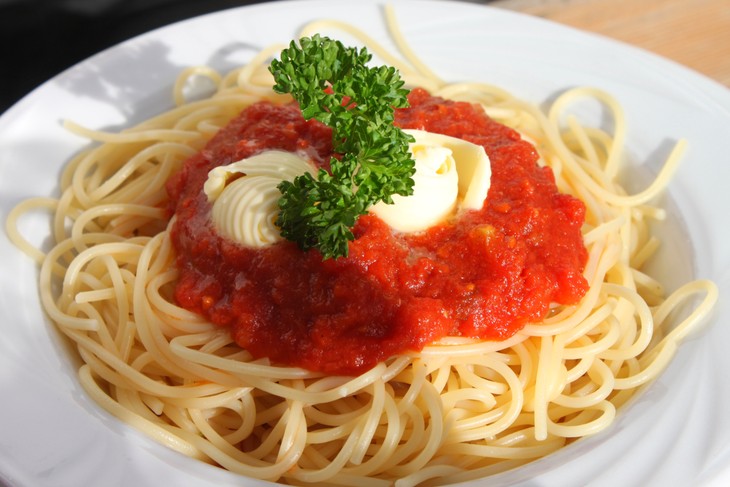(VOVWORLD) - The origin of pasta, like a tale as old as time, is still debated. According to National Geographic TV network, this food was widely mentioned in 13th century documents, and has since become a beloved dish around the globe. With more than 350 types of pasta in all shapes and sizes, each paired with a distinct cooking technique, it can be quite confusing for beginners to grasp the basics of this dish. Today, we are going to learn the recipe for a pasta dish that is simple, yet always hits the spot. Let’s check out how to make a classic tomato spaghetti with chef Nico Ceccomoro, owner of two Italian restaurants in Hanoi: Cugini and Sanzio Deli.
 Nico Ceccomoro understands the essence of authentic Italian cuisine (Photo: Nico Ceccomoro) Nico Ceccomoro understands the essence of authentic Italian cuisine (Photo: Nico Ceccomoro) |
Nico Ceccomoro champions true Italian cuisine, and his concept is that fresh, high-quality ingredients should always be the backbone of the dish. And perhaps nothing elevates the natural flavors of the ingredients like a classic tomato spaghetti. For Nico, choosing the right kind of spaghetti is the most important step.
“The best way is to have good quality spaghetti. When the pasta has a very good quality, even if you never tried it before, it must not look shiny. If the pasta is shiny and transparent, it’s one of the first things telling you this pasta is not good quality. Pasta must be very rough. And it's supposed to be indicated on the packaging that the pasta has a slow dehydration point, which means they removed the water from the pasta slowly at a low temperature. That will help the grain and the pasta to give all the flavor to whatever you're planning to cook,” Nico told VOV.
 Pasta quality can be judged by the color and texture (Photo: Popo le Chien/Wikimedia Commons) Pasta quality can be judged by the color and texture (Photo: Popo le Chien/Wikimedia Commons) |
Once you have chosen a slow-dried, matte-colored type of spaghetti, it’s time for the sauce, made with just four ingredients that can easily be found in your cupboard!
“It's made of extra virgin oil, very good garlic, basil-fresh basil, not the dry one - and some chilies. Then, you may add some cheese. Some Italians don't do that. But I do love my spaghetti tomato with parmigiana, which is the king of cheese," Nico explained.
"I’m going to stir fry my garlic with a bit of chili and then I'm going to add some of the tomato sauce and just let it go for 10 minutes. I really like to cook it for very little time, not too much because I want to keep the aroma of the tomatoes. The more you look to cook it, the heavier the sauce will be. Then I set the sauce to the side.”
The next step is boiling the spaghetti. This is when the art of “Al dente” pasta comes into play. Al dente is Italian for "to the tooth", meaning there should be a slight bite to your pasta. By doing this, the spaghetti retains its texture, avoids being too soft and mixes well with the sauce. But how to master “Al dente”? Nico said you just need to boil the pasta about 2 or 3 minutes less than the packaging indicates.
 Tomato spaghetti is a simple dish that always hits the spot! (Photo: Benreis/Wikimedia Commons) Tomato spaghetti is a simple dish that always hits the spot! (Photo: Benreis/Wikimedia Commons) |
He said, “If the box says 10 minutes, for example, I will cook it for eight. And then I will add the water of the pasta and the spaghetti into the tomato sauce. I will keep cooking that in the pan for another two minutes more so we get all the flavor inside the spaghetti too. After that, just turn off your fire. You can add a little fresh extra virgin olive oil to give this very beautiful aroma, then add cheese at the end. You should never put cheese on the fire, especially aged cheese like parmigiano because it tends to coagulate and makes a very gluey pasta, which is not good. So, the cheese goes in when the heat goes down.”
And that’s how you get an authentic, flavorful tomato spaghetti in just under 20 minutes! The tomato spaghetti pairs well with kale salad and some garlic bread. With Nico’s recipe, who says you can’t bring Italy delicacy to your kitchen?